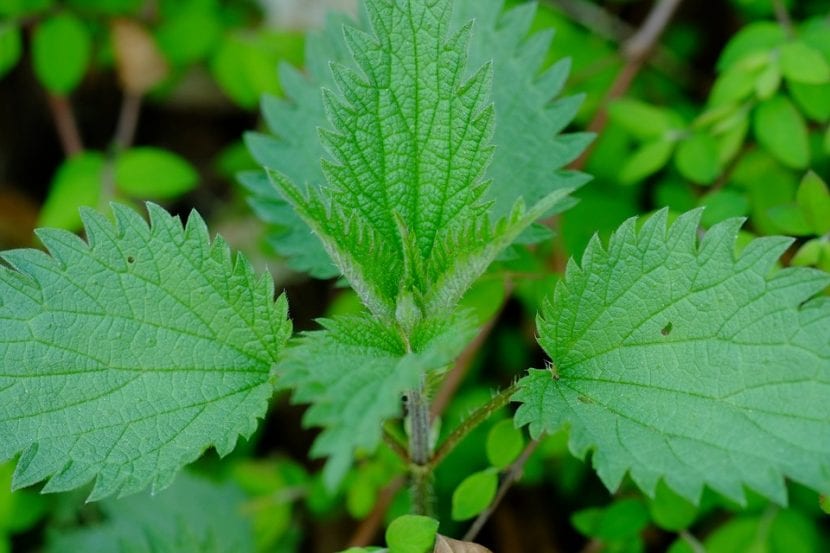
La nettle It is a plant of which one does not usually have good memories, and with good reason: both on the stems and on the underside of the leaves it has stinging hairs that, at the slightest touch with the skin, release a liquid that produces itching and stinging. . It's certainly not surprising that more than one and more than two think it is too common in the open fields.
But what would you say to me if I told you that it is a great idea to grow it in the garden or on a patio? And that it has numerous uses both medicinally and in gardening? If you want to know what they are, then I'm going to reveal all its secrets to you 🙂.
Origin and characteristics of nettle
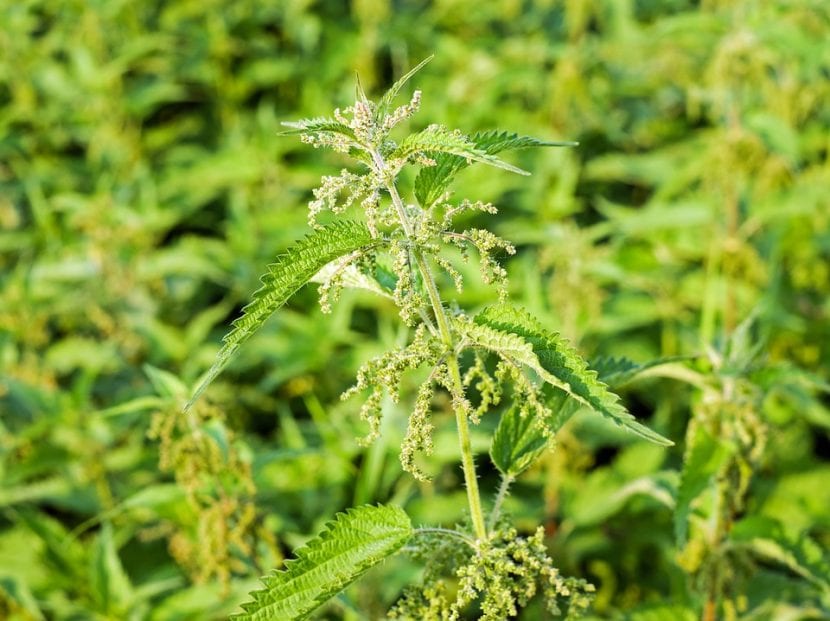
Although they all seem the same to us, about twenty species belonging to the genus Urtica are known. Most are perennial shrubby plants that can reach a maximum height of 1,5 meters originating in the temperate or warm regions of the world, especially the Northern Hemisphere.
The leaves are oval, with a serrated margin, pointed, dark green in color and up to 15 centimeters in size. On the underside have various stinging hairs containing formic acid, resin, and histamine, as do the stems from which they sprout. Said stem is reddish or yellowish, erect, branched and hollow in the internodes.
They bloom from summer. The flowers are grouped in panicles, and are generally unisexual and small up to 10cm. The female ones are long hanging catkins, and the male ones are shorter. The fruit is a capsule called dry achene.
Main species
The most popular are:
Urtica dioica

Known as greater nettle or green nettle, it is a perennial shrubby plant native to the Northern Hemisphere except America. In Spain it is very common throughout the country, including both archipelagos (Balearic and Canary Islands). Grows between 50 and 150 centimeters in height, in any soil that is rich in nitrogen, such as gardens, orchards, fields, corrals, in the mountains, etc.
Urtica ferox
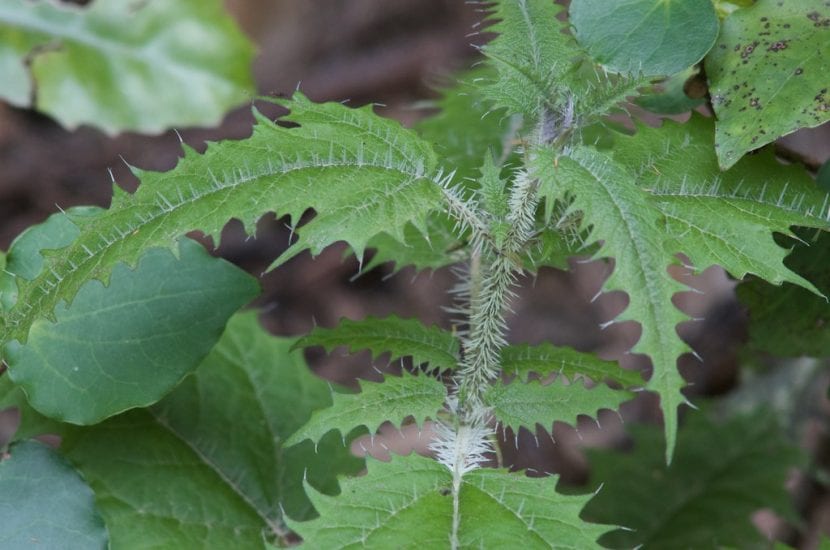
Image - Flickr / Mollivan Jon
Known as ongaonga, is a shrubby plant endemic to New Zealand that can reach a height of up to 5 meters, being the highest of the genre; and also one of the most dangerous. It differs from the rest not only by its height, but also by its leaves, which are narrower and spiny, and by its thorns, which are longer, reaching 8 centimeters.
Urtica Membracea
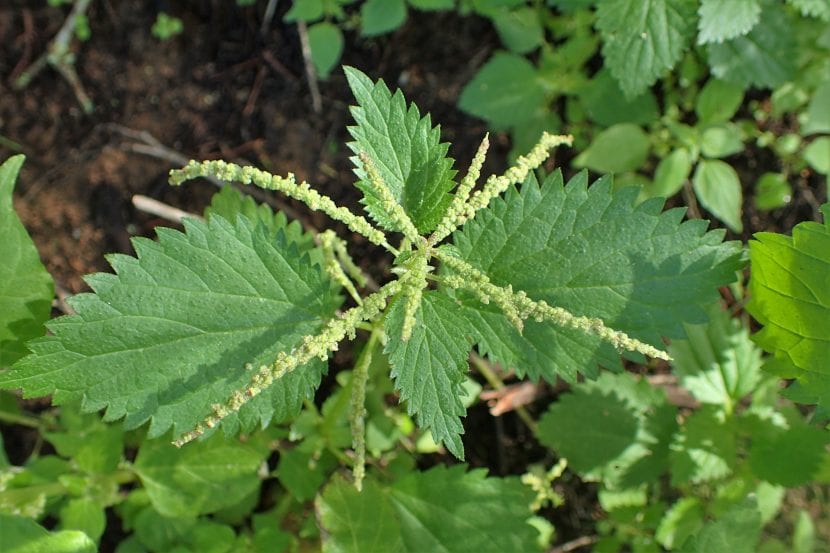
Image - Wikimedia / Krzysztof Ziarnek, Kenraiz
It is a plant native to the Mediterranean that, unlike green nettle, it is an annual cycle plant; that is, in just a few months it will germinate, grow, flower and die. It can also reach a height of one and a half meters, but the usual thing is that it stays at 40-60 centimeters. It is common to see it in the vacant and somewhat shady lands.
Urticaria
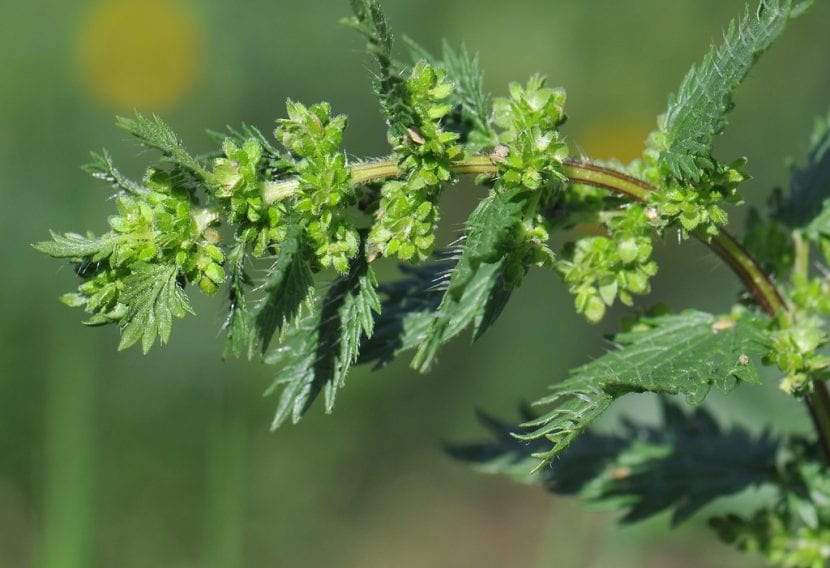
Image - Flickr / chemazgz
Known as minor nettle, hand bite, fly bite, picasarna or ronchona, It is a perennial herb that grows in practically the entire Northern Hemisphere. The flowers are lilac, and they sprout from autumn to spring, fruiting in the latter season.
What is nettle for?
Now that we've seen what the main species are, it's interesting to wonder what they are for, right? Well, here is the answer:
Medicinal
It has antioxidant, anti-inflammatory, hypoglycemic, bactericidal, diuretic properties and it can also be used to treat minor skin problems.
You have to collect - with gloves on - the young leaves and stems that are in good health, between the months of May and August. Then, you can put them to dry or make infusions with them.
Edible
Due to their medicinal properties since they are not toxic or dangerous plants once they have run out of stinging liquid (this is achieved by putting them and shaking them strongly in water), also they are eaten fresh or in salads.
Gardening
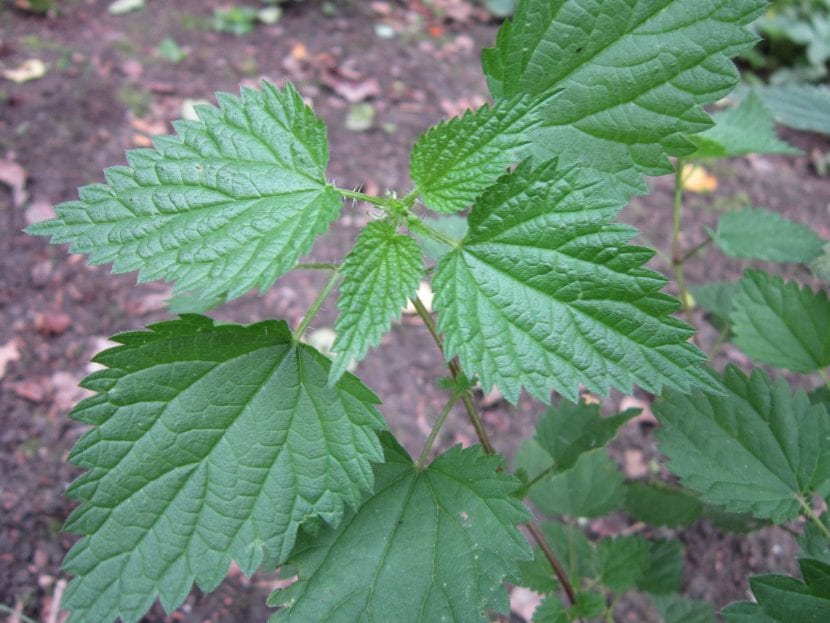
Nettle has many uses in gardening:
- It is insect repellent.
- Supports the immune system of plants.
- It is a good fertilizer for the soil, since it is rich in nitrates and an excellent biostimulant.
- It is excellent as a compost activator.
How to use
How is it used? For it you have to follow this step by step:
- 1kg of the plant is harvested, without roots, before flowering or as soon as it begins to flower.
- Then, it is put in a bucket with ten liters of water, and with something that weighs a lot so that it stays at the bottom.
- Every 1-2 days you have to stir the water. So up to 15 days.
- After that time, and when you see that bubbles no longer appear and that it smells bad, it will be time to filter it and store it in a bottle until use.
Shot
The dose will depend on what you want to use it for:
- Undiluted, it is excellent for speeding up compost breakdown.
- Diluting 1/50 (1 liter of preparation for 50 of water) is good as a repellent and as a treatment for pests such as mites or aphids.
- Diluting 1/20 (1 liter of preparation for 20 of water) stimulates seed germination and growth.
- Diluting 1/10 (1 liter of preparation for 10 of water) stimulates growth.
Another option is to buy it already made and follow the step indicated on the package 🙂:
How is nettle grown?
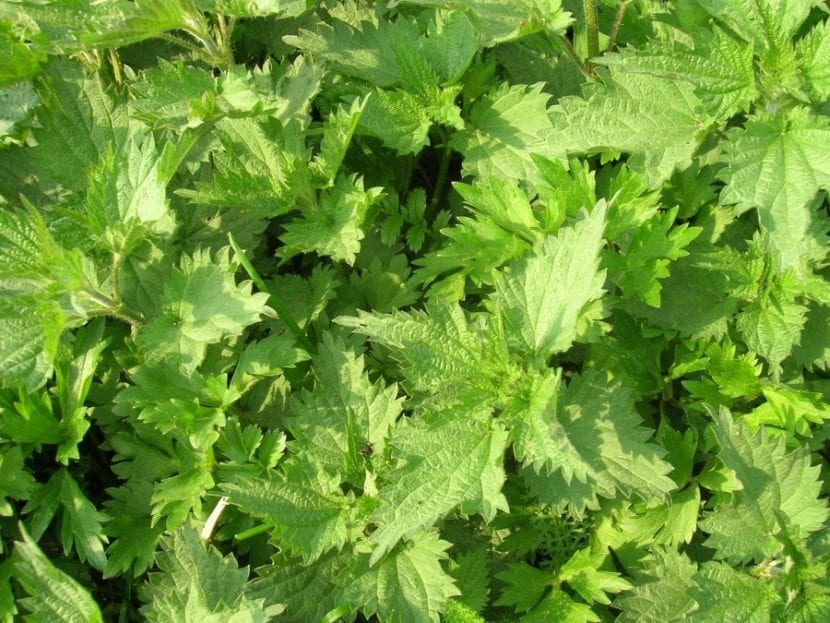
And finally, it is good to know what you need to grow:
Location
It is a plant that must be abroad, in semi-shadow.
Earth
- Flower pot: not demanding. You can fill it with universal substrate (on sale here).
- Garden: grows in all types of soils as long as they are somewhat fertile and well drained.
Irrigation
Water the nettle 3-4 times a week in summer, and somewhat less often the rest of the year.
Subscriber
It is not necessary, although if you wish you can pay it with organic fertilizers, such as guano (for sale here) in spring and summer.
Multiplication
Nettle multiplies by seeds in spring, which have to be sown in seedbeds with drainage holes filled with universal substrate. You should try not to put too many in the same seedbed, since otherwise not all will reach adulthood.
Place them outside, in semi-shade, and keep in the humid substrate. That way they will germinate in a week or two.
Rusticity
It depends on the species, but in general they resist up to -7ºC.

Do you dare to grow nettles?
